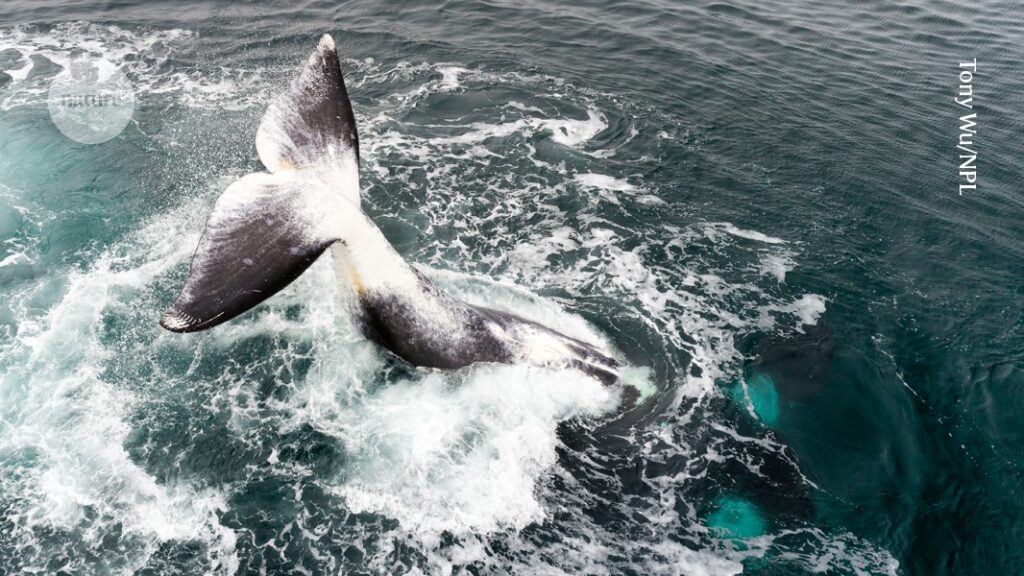The bowhead whale (Balaena mysticetus) can live for more than 200 years, thanks in part to a highly effective DNA-repair protein.Credit: Tony Wu/Nature Picture Library
Encased in a blanket of blubber that is nearly half a metre thick, and with a habit of smashing head-first through Arctic ice, the 80,000-kilogram bowhead whale does not, at first glance, seem a natural poster child for health and longevity.

What’s the secret to living to 100? Centenarian stem cells could offer clues
But one of the cetacean’s most impressive stats turns out to be its lifespan: sometimes living for more than 200 years, the bowhead whale (Balaena mysticetus) puts humanity’s prized centenarians to shame. An investigation of the animal’s cells has now surfaced one reason for the bowhead’s ability to endure for centuries without succumbing to cancer or other age-related diseases: a cold-activated protein that helps to repair broken DNA1 .
“Everybody knows the bowhead whale is extremely long lived, but nobody knew why,” says Zhiyong Mao, a molecular biologist at Tongji University in Shanghai, China, who was not involved in the study. “This tells us that tackling DNA repair to improve genome stability is a very effective strategy to confer this extreme longevity.”
With further work, the findings, which were published on 29 October in Nature, could also shed light on ways to help humans live longer, he adds. When the whale protein was expressed in human cells, their ability to repair DNA improved.
No easy keeper
Researchers have often turned to a menagerie of curiously long-lived animals, from bats to beavers to elephants, in search of clues to an expansive lifespan. Earlier in October, for example, Mao and his colleagues reported2 that the naked mole rat, which can live for more than 30 years — a remarkable feat for a rodent — also sports a souped-up DNA-repair protein.
The bowhead whale, however, is a particularly difficult research subject. It is one of the largest animals on Earth; maintaining a few in a laboratory is not an option. And it is endangered, which makes studying the animals in the wild a challenge as well.
But each autumn, Iñupiaq Inuit villages in northern Alaska are allowed to hunt bowhead whales. Hunters then set aside a few tissue samples, and students working with Vera Gorbunova, a co-author of the study and a biologist at the University of Rochester in New York, who studies ageing, make the long trek north to pick up the samples. “Courier service doesn’t go there,” says Gorbunova. “There are no roads.”

